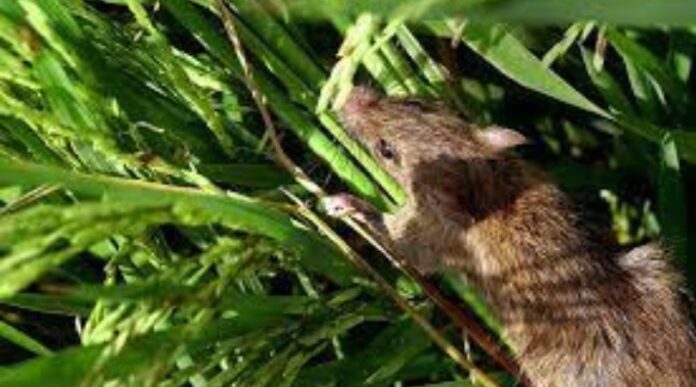AIZAWL:
Over 295 hectares of paddy cultivation, both jhums and wet rice have so far been ravaged by rodents in Mizoram, state agriculture director James Lalsiamliana said on September 20.
Lalsiamliana said that more reports have been pouring in from different districts by the agriculture department officials with south Mizoram’s Lunglei district and Mizoram-Tripura-Bangladesh border Mamit district the worst-hit so far.
It was informed that at least 144 hectares of land at Bunghmun agriculture block in Lunglei district was destroyed by swarms of rodents within 16 villages.
Around 52 hectares of land in Lunglei agriculture block owned by 9 farming villages was attacked by rats while around five hectares of land belonging to Thaizawl village was attacked by leafhoppers, not rodents, the director said.
Both rats and leafhoppers attacked 4 hectares of land in Lungsen agriculture block belonging to four farming villages and caused severe destruction.
Mamit district’s West Phaileng agriculture was one of the hardest hit as 2 hectares of land belonging to seven farmers at Tuirum village were completely destroyed by the rodents.
In total, 95.6 hectares of paddy cultivation areas belonging to 297 villagers in six villages were infested by the rats.
Reports from Myanmar border Champhai district said that villagers witnessed increasing number of rodents in the paddy fields, but the rats launched more attacks on vegetables than paddy harvest.
While the local people termed the outbreak of rodents as a harbinger of the impending gregarious flowering of bambusa tulda or bambus vulgaris, locally known as ‘Rawthing’ in 2025, agriculture department officials did not rule out the after-effects of the gregarious flowering of Dendrocalamus longispathus, locally known as ‘Rawnal’.
Earlier, outbreak of cinnamon bugs or stinky bugs, locally known as ‘Thangnang’ was witnessed in many places across the state, which was also regarded as omen of disasters to come. The cinnamon, however, is innocuous and swarmed tree leaves without leaving any destructions.
The stinky oil of the cinnamon bugs had been a good source of oil for the oil-hungry Mizo people in the past and the villagers still continued to savor the oil till date.
Massive multiplication of rodents due to gregarious flowering of bambusa tulda and melocanna baccifera (locally known as ‘Mautak’) had resulted in famines, respectively as ‘Thingtam’ or ‘Mautam’ in Mizoram causing severe hardships and even deaths of many people.
The gregarious flowering of the two main species of bamboo in Mizoram happened in a cycle of every 48 years.


